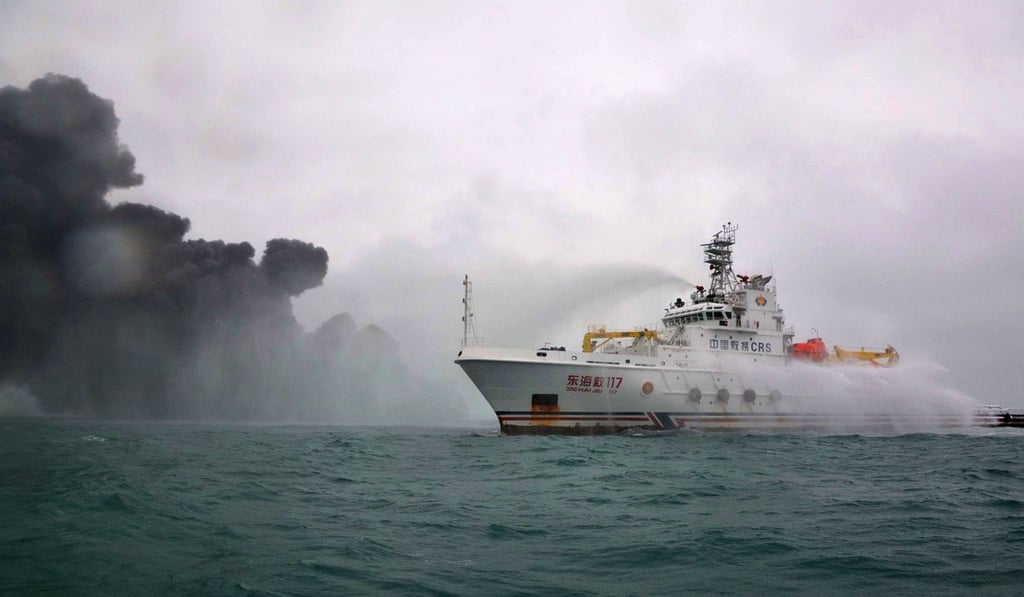Update | Rescuers find body on Iranian oil tanker burning in East China Sea. Dozens of crew members still missing
Poor weather hampers efforts to extinguish fire as fears grow of threat from highly toxic cargo spill

Rescue crews found the body of one of 32 missing crew members from a burning Iranian oil tanker off China’s east coast on Monday as fire raged for a second day after a collision with a grain ship.
As emergency workers struggled to bring the blaze under control, fears rose that the tanker, which hit the freighter on Saturday night in the East China Sea and burst into flames, could explode and sink, state-run China Central Television (CCTV) reported on Monday.
There was no word on the size of a reported oil spill from the tanker or the threat it posed to the environment but it has the potential to be the worst slick since 1991 when 260,000 tonnes of oil leaked off the Angolan coast.
Poor weather continued to hamper the rescue work, Chinese foreign ministry spokesman Lu Kang said, as Iranian and Chinese officials confirmed that the remains of one of the 32 missing crew from the tanker was found on board on Monday afternoon.

Mohammad Rastad, head of Iran’s Ports and Maritime Organisation, was quoted by the ISNA news agency as saying the body had been sent to Shanghai for identification. The fate of the remaining 31 sailors is not known.